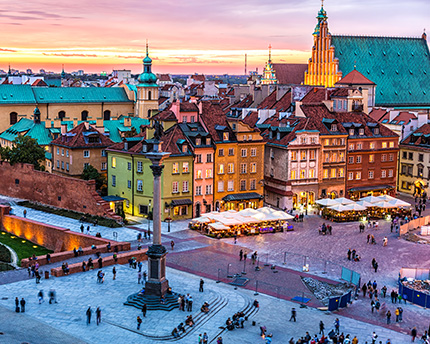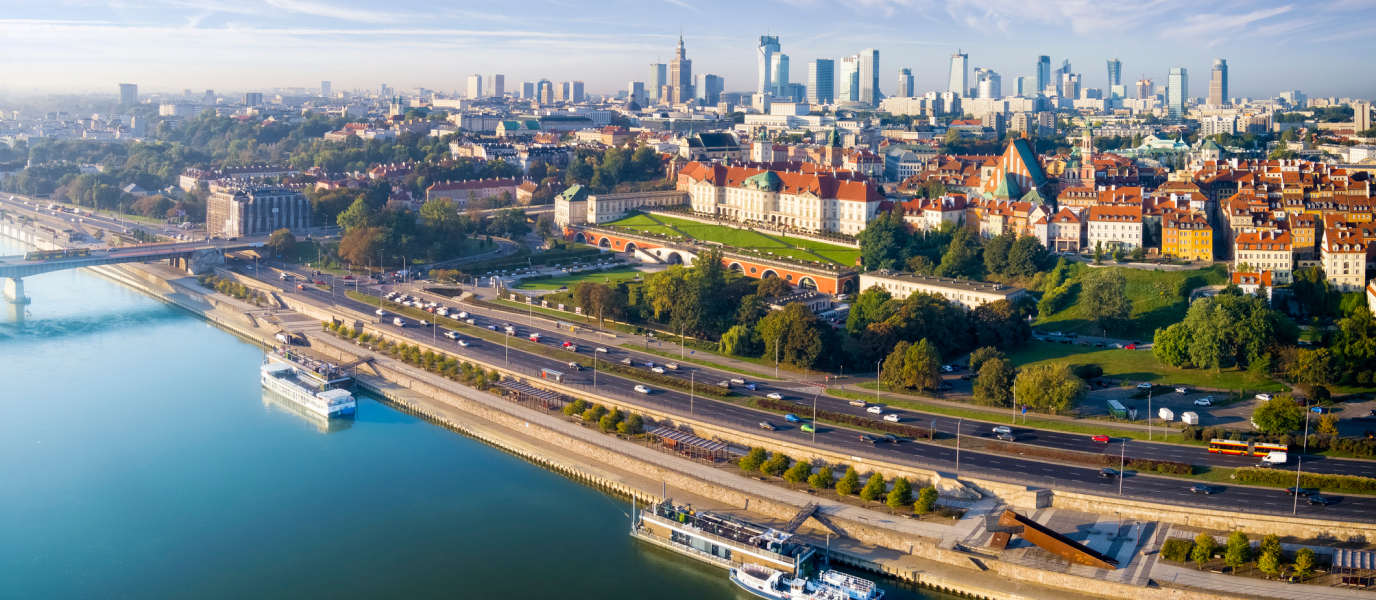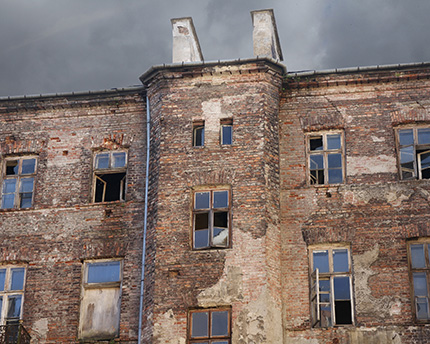A UNESCO World Heritage Site, the Historic Centre of Warsaw, known as Stare Miasto or Starówka, is one of the main attractions of the Polish capital. It is the place where history has recorded some of its darkest chapters but also some of its most inspiring.
In 1944, the Nazis wiped out nearly 85% of the area, but it was able to rise like a phoenix from the ashes to its former splendour. The meticulous and almost epic restoration campaign carried out after the war, which included all types of public and private buildings, walls, churches, palaces, squares and markets, has become a paradigmatic example of the recovery of the heritage that spans from the 13th to the 20th century.
In any case, enjoying a pleasant stroll through the streets of Warsaw’s old quarter, exploring its squares, monuments and charming corners, while feeling the fascinating weight of history, is one of the must-do experiences for anyone visiting the Polish capital.
Castle Square
The main gateway to Starówka (not the only one, but it is the main way) is this large esplanade that opens up between Warsaw Royal Castle and the Old Town itself. It is a regular meeting place for tourists and locals alike and is always very lively.
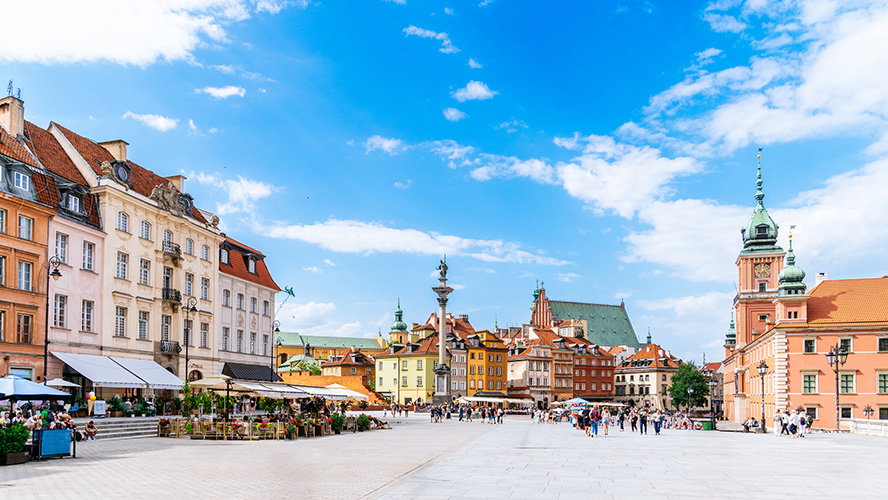
In addition to the castle itself (Zamek Królewski), this large, more or less triangular-shaped area is home to famous monuments such as Sigismund’s Column, one of the city’s typical meeting points. The tall 17th-century granite Corinthian column (also rebuilt after the war) commemorates King Sigismund III Vasa (King of Poland and Grand Duke of Lithuania from 1587 to 1632, and also King of Sweden from 1592 to 1599), a key figure in the country’s history and responsible for moving Poland’s capital from Kraków to Warsaw at the end of the 16th century.
Around the square there are also several historic buildings (on the opposite side of the castle) which today house various shops, bars, a restaurant and a useful tourist information point. It is also where the famous Krakowskie Przedmieście, one of the most important and majestic streets in the city, starts (or ends, depending on how you look at it), flanked by numerous palaces, churches and other references to its rich aristocratic origins.
Royal Castle
Between Castle Square and the river Vistula, Zamek Królewski, the former official residence of the Polish kings (until 1795), marks the southern end of the Old Town. While it is true that its origin dates back to the 14th century, its current appearance is due to changes made in the 16th and 17th centuries, especially during the reign of Sigismund III (yes, the column guy).
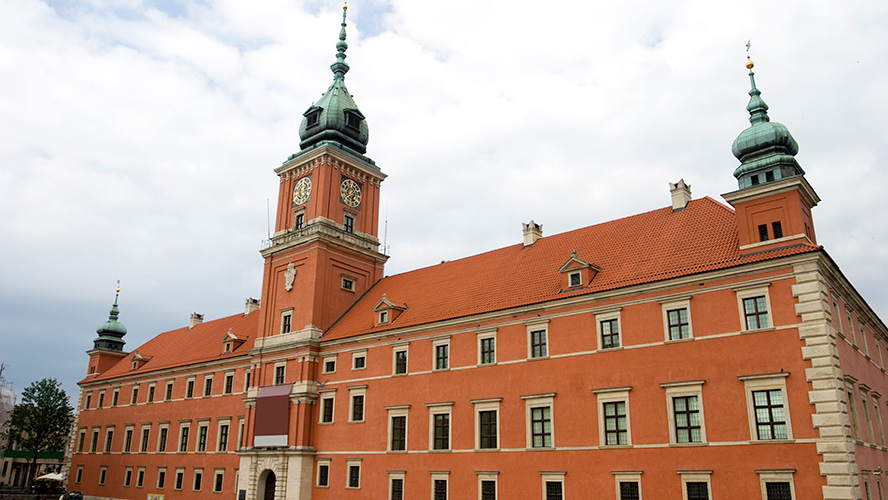
Like the rest of the Old Town, the sober red-brick royal complex was destroyed by Nazi Germany’s bombs but was brought back to life thanks to the determination of the Warsaw people. Today, the site is one of the city’s main historical treasures (perfectly musealised) and also a lively place where concerts, temporary exhibitions and other artistic and cultural activities are regularly held.
At the rear of the building, facing the river Vistula, the Castle Gardens (Upper and Lower), the Kubicki Arcades and the adjacent Copper-Roof Palace (18th century) are also truly marvellous.
Saint John’s Cathedral
Just a few hundred metres from the Royal Castle, entering the heart of the Old Town on Świętojańska Street, is one of the oldest churches in the Polish capital and the episcopal see of the Warsaw Archdiocese, the Archcathedral Basilica of the Martyrdom of Saint John the Baptist or, as it is known throughout the world, Saint John’s Cathedral.
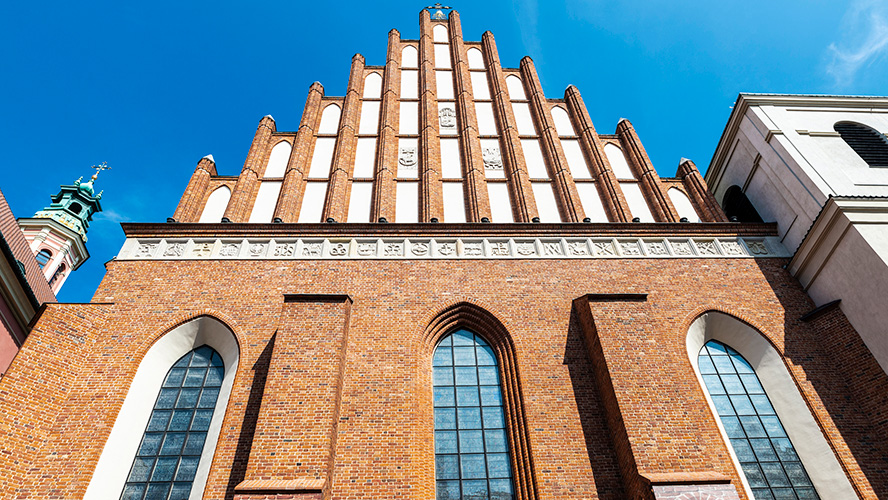
Originally built in the 14th century, Saint John’s is one of three cathedrals in Warsaw, but it is the only one with the rank of archcathedral, i.e. the seat of the metropolitan archbishop. Rebuilt after the war in what may well have been its original appearance, in the Mazovian Gothic style, the church was for centuries the site of royal weddings and coronations of Polish kings and the burial place for various illustrious figures, from the former princes of Mazovia and the last Polish monarch, Stanisław II Poniatowski, to presidents of Poland and prominent artists such as the Nobel Prize winner for Literature, Henryk Sienkiewicz.
In addition to the crypt, the interior contains interesting decorative elements, from various paintings and sculptures arranged in several chapels to a replica of the original baroque choir.
Market Square
Surrounded by shops, cafés and restaurants, this historic square (the oldest in the city) is the beating heart of Warsaw’s Starówka. Throughout its more than seven centuries of history, it has seen everything from fairs and markets to public executions. Fortunately, today it is simply a charming place, lined with beautiful historic buildings from the 17th century (they are actually reconstructions made between 1948 and 1953), ideal for having a drink and enjoying a lively atmosphere.
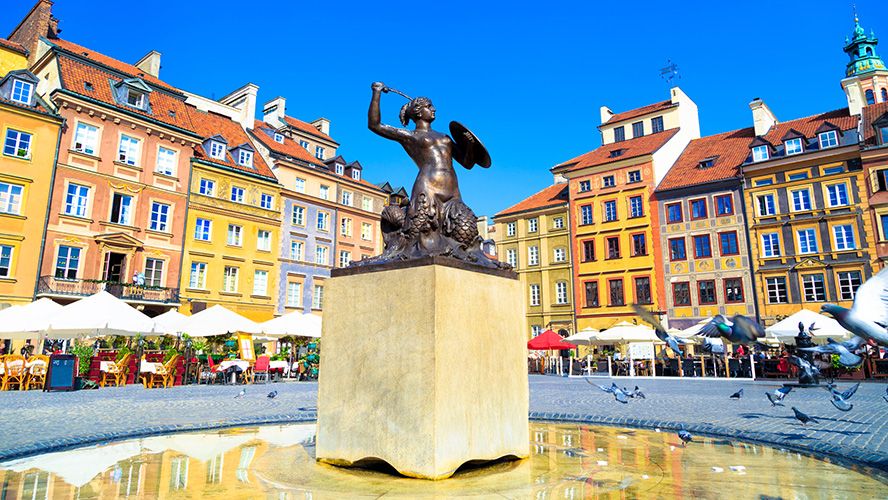
In the centre of the square, a small bronze sculpture by Konstanty Hegel depicts the famous (and ubiquitous) Warsaw Mermaid, i.e. the traditional coat of arms of the Polish capital. On the north side, the Museum of Warsaw is the perfect place for learning about the many vicissitudes that this fascinating city has experienced over time.
Starówka, a collection of beautiful places
In addition to its most representative areas, if there is one thing that characterises Warsaw’s Old Town, it is the more or less visible spots that make it an enchanting place full of stories, big and small. In short, it is a place that is worth exploring at leisure.
The Little Insurrectionist
Protected by Starówka’s medieval walls on Podwale Street, this small statue of a child soldier, known as Mały Powstaniec (‘The Little Insurrectionist’ in Polish), is a tribute to all those who fought in the Warsaw Uprising, the largest civilian rebellion against Nazi Germany which took place between 1 August and 2 October 1944. It was a massive tragedy that ended with the near-total destruction of the city.
The Barbican
On the opposite side of the old quarter (at the end of Nowomiejska Street, located between the Old and New Towns), this exceptional jewel of medieval architecture is one of the few remaining relics of Starówka. The structure (originally built in the mid-16th century and rebuilt in the mid-20th century) consists of four towers and a large semi-circular bastion that were once part of the city’s defensive system.
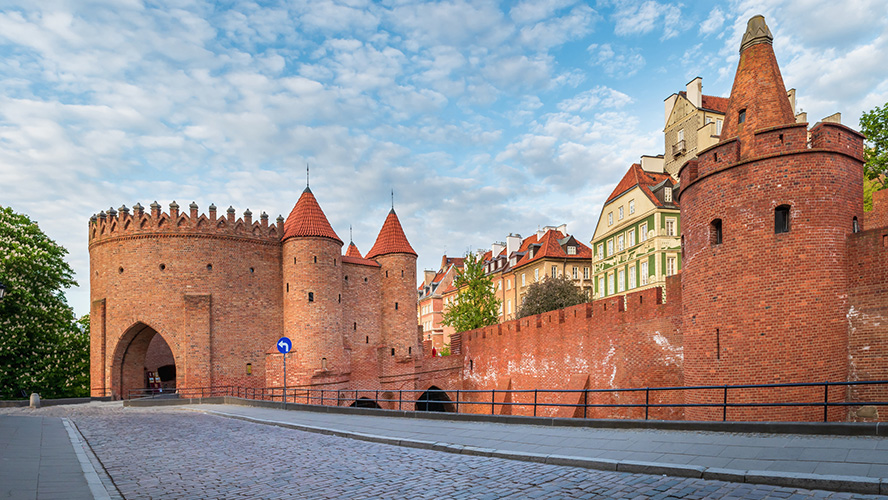
City walls
On both sides of the Barbican, following the layout of today’s Podwale Street, the double ring of brick walls, also reconstructed after the war, delimits a large part of the Old Town and provides a glimpse of medieval Warsaw. A stroll along the route reveals a multitude of details, from architectural elements to interesting sculptures and commemorative objects.
Kanonia bell
Behind Saint John’s Cathedral, in a small square (once a cemetery), a large bell which grants wishes rests directly on the ground. Just circle it three times (touching it with your right hand) thinking about what you want to achieve… and that’s it! One grim detail is that some of the walls of the square still bear the bullet holes from the fighting during the 1944 Warsaw Uprising.

Gnojna Góra lookout point
One street away from Market Square, overlooking the banks of the Vistula, this viewpoint offers beautiful views of the surrounding area (Saint Florian’s Cathedral, the Praga district, the National Stadium, the river itself, etc.) and its railings are full of love locks. A curious fact is that it is built on a large waste mound (a rubbish heap) dating from medieval times.
In any case, walking through the streets of Stare Miasto, the old Warsaw, means unravelling its countless secrets. It is a fascinating place, marked by a long history that includes some truly tragic chapters, but also episodes full of magic, colour and hope, all of which form a truly exciting mosaic.



































































